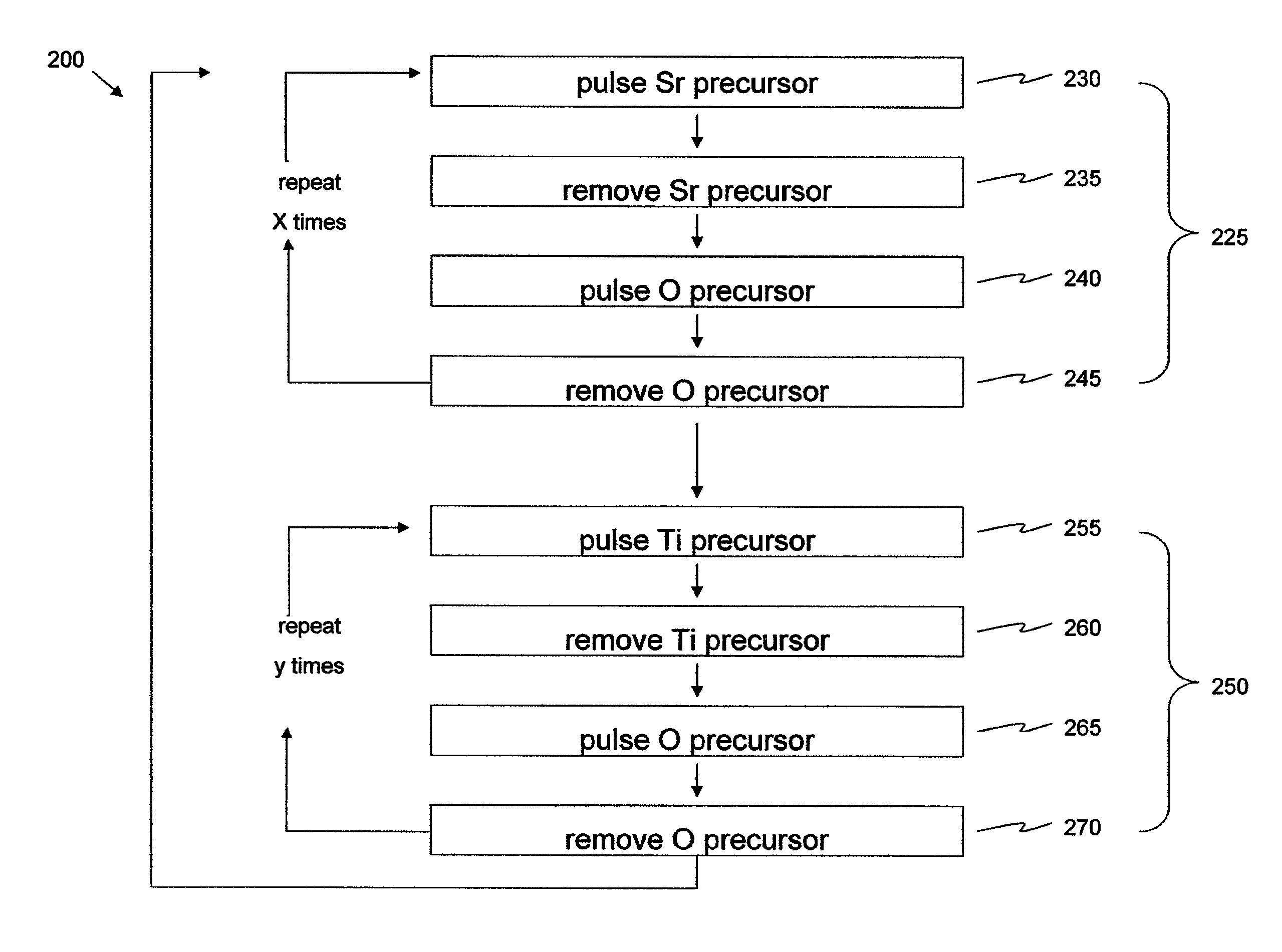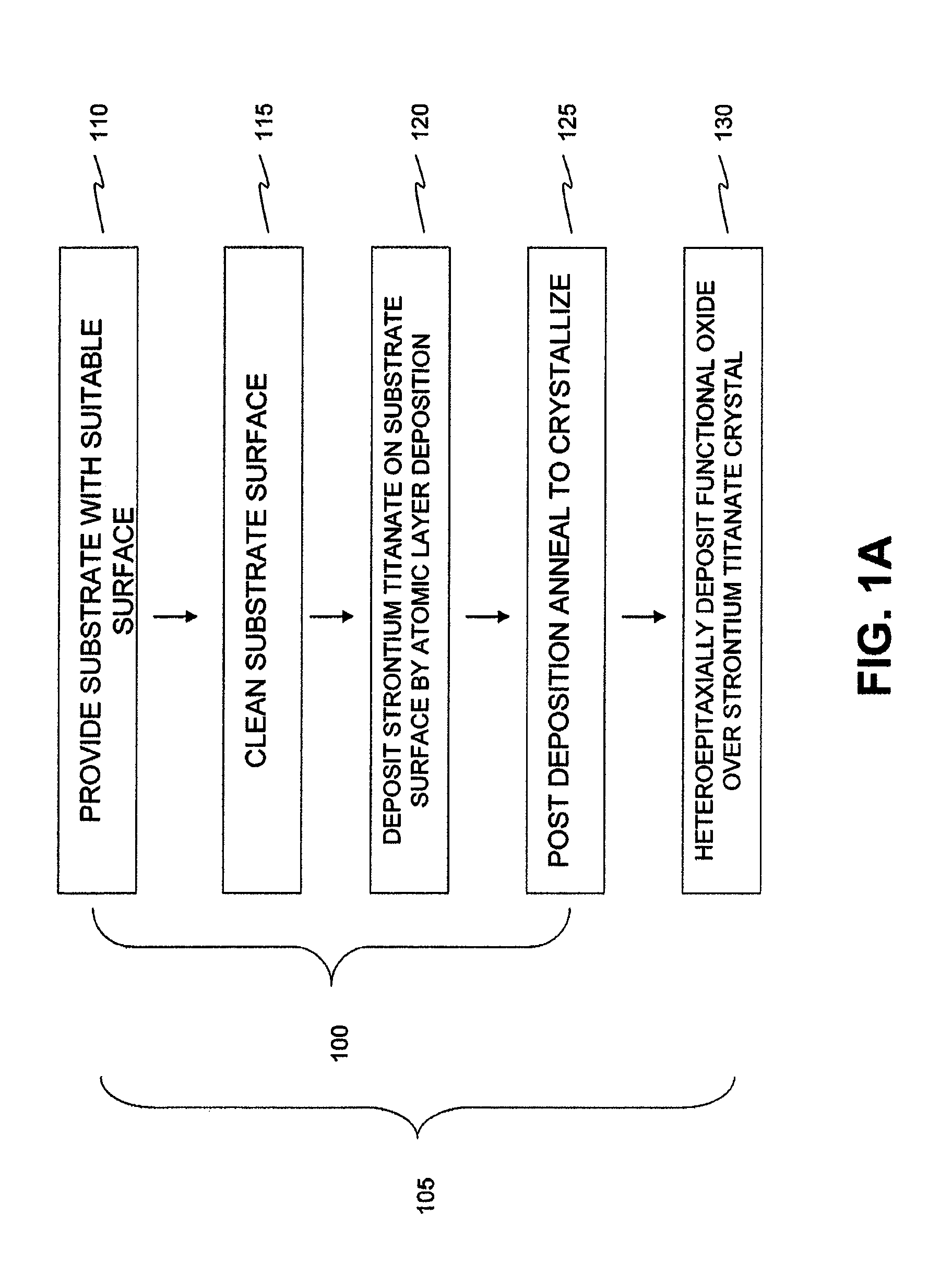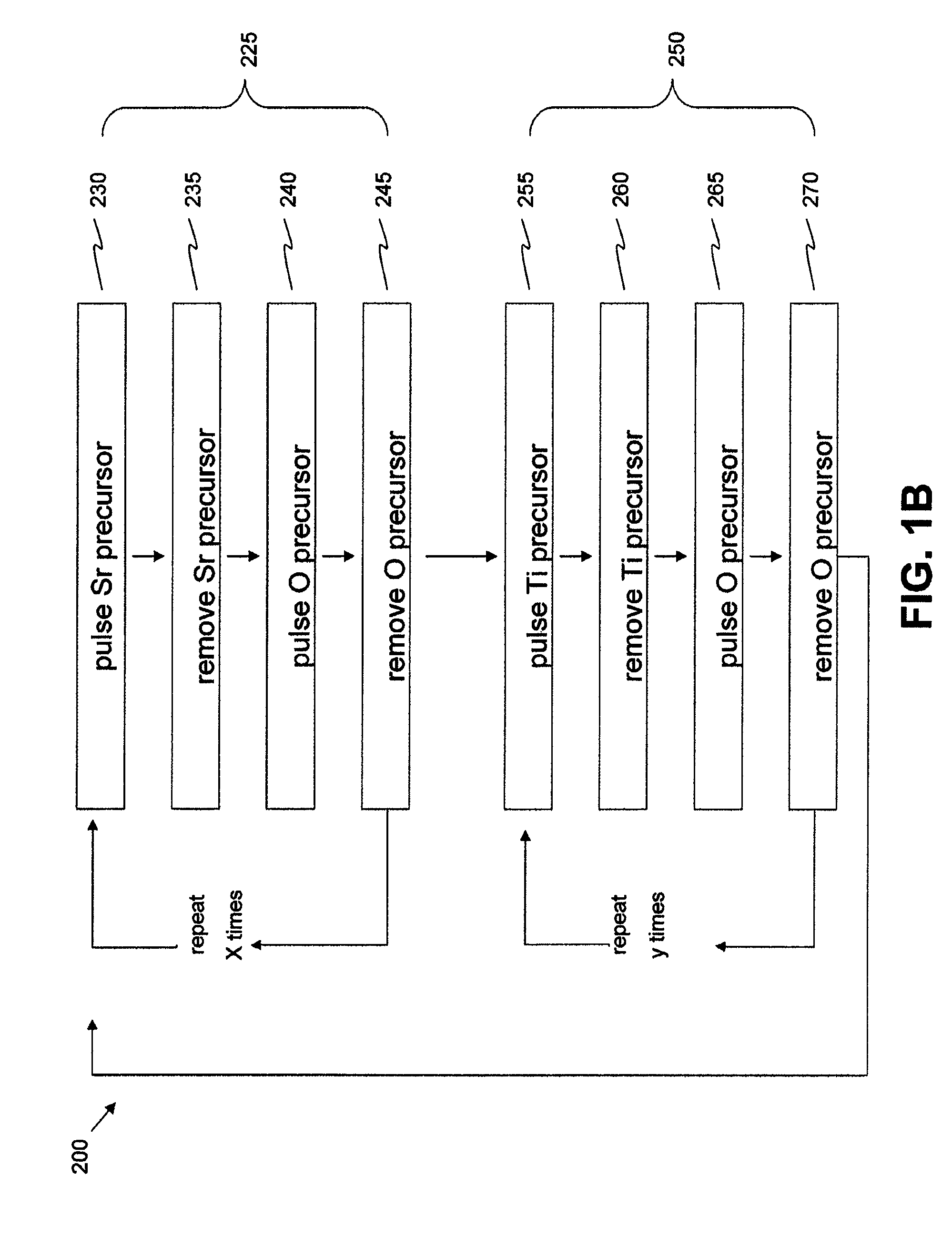Crystalline strontium titanate and methods of forming the same
a strontium titanate and crystalline technology, applied in the field of strontium titanate, can solve the problems of limiting the usefulness of commercial scale production of functional oxides, difficult to obtain srtio/sub>3/sub> for forming functional oxides in large substrates,
- Summary
- Abstract
- Description
- Claims
- Application Information
AI Technical Summary
Benefits of technology
Problems solved by technology
Method used
Image
Examples
examples
[0100]Strontium titanate films were deposited by ALD in a Pulsar® 2000 R&D reactor. The reactor was modified from the standard design with two convection oven-based heating sources to enable the heating of the Sr and Ti precursors used. Sr(t-Bu3Cp)2 and Ti(OMe)4 were used as metal precursors and O3 as the oxygen source. The strontium source was at 165° C. and the Ti source was at 155° C. The ozone concentration used was 200 g / Nm3 and the reactor temperature was 250° C. See Blomberg et al. Thin Solid Films, Volume 520, Issue 21, 31 Aug. 2012, Pages 6535-6540, the disclosure of which is incorporated herein by reference in its entirety.
[0101]Films were deposited on Ø200 mm Pt / Ti / SiO2 / Si wafers with ˜80 nm Pt, ˜10 nm Ti and ˜20 nm thick SiO2 layers. FIG. 2 is a photograph of an exemplary substrate after STO deposition. The thicknesses and compositions of the films were estimated with spectroscopic ellipsometry (Sentech SE800). The ellipsometric model was first calibrated with XRR (Brüke...
PUM
| Property | Measurement | Unit |
|---|---|---|
| temperature | aaaaa | aaaaa |
| temperature | aaaaa | aaaaa |
| temperature | aaaaa | aaaaa |
Abstract
Description
Claims
Application Information
 Login to View More
Login to View More - R&D
- Intellectual Property
- Life Sciences
- Materials
- Tech Scout
- Unparalleled Data Quality
- Higher Quality Content
- 60% Fewer Hallucinations
Browse by: Latest US Patents, China's latest patents, Technical Efficacy Thesaurus, Application Domain, Technology Topic, Popular Technical Reports.
© 2025 PatSnap. All rights reserved.Legal|Privacy policy|Modern Slavery Act Transparency Statement|Sitemap|About US| Contact US: help@patsnap.com



